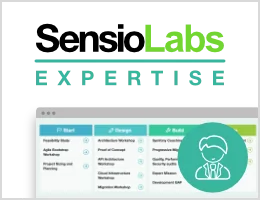UserPassword
This validates that an input value is equal to the current authenticated user's password. This is useful in a form where a user can change their password, but needs to enter their old password for security.
Note
This should not be used to validate a login form, since this is done automatically by the security system.
Note
In order to use this constraint, you should have installed the symfony/security-core component with Composer.
| Applies to | property or method |
| Class | UserPassword |
| Validator | UserPasswordValidator |
Basic Usage
Suppose you have a ChangePassword class, that's used in a form where
the user can change their password by entering their old password and a
new password. This constraint will validate that the old password matches
the user's current password:
1 2 3 4 5 6 7 8 9 10 11 12
// src/Form/Model/ChangePassword.php
namespace App\Form\Model;
use Symfony\Component\Security\Core\Validator\Constraints as SecurityAssert;
class ChangePassword
{
#[SecurityAssert\UserPassword(
message: 'Wrong value for your current password',
)]
protected string $oldPassword;
}1 2 3 4 5 6
# config/validator/validation.yaml
App\Form\Model\ChangePassword:
properties:
oldPassword:
- Symfony\Component\Security\Core\Validator\Constraints\UserPassword:
message: 'Wrong value for your current password'1 2 3 4 5 6 7 8 9 10 11 12 13 14 15 16
<!-- config/validator/validation.xml -->
<?xml version="1.0" encoding="UTF-8" ?>
<constraint-mapping xmlns="http://symfony.com/schema/dic/constraint-mapping"
xmlns:xsi="http://www.w3.org/2001/XMLSchema-instance"
xsi:schemaLocation="http://symfony.com/schema/dic/constraint-mapping https://symfony.com/schema/dic/constraint-mapping/constraint-mapping-1.0.xsd">
<class name="App\Form\Model\ChangePassword">
<property name="oldPassword">
<constraint
name="Symfony\Component\Security\Core\Validator\Constraints\UserPassword"
>
<option name="message">Wrong value for your current password</option>
</constraint>
</property>
</class>
</constraint-mapping>1 2 3 4 5 6 7 8 9 10 11 12 13 14 15 16 17 18 19 20
// src/Form/Model/ChangePassword.php
namespace App\Form\Model;
use Symfony\Component\Security\Core\Validator\Constraints as SecurityAssert;
use Symfony\Component\Validator\Mapping\ClassMetadata;
class ChangePassword
{
// ...
public static function loadValidatorData(ClassMetadata $metadata): void
{
$metadata->addPropertyConstraint(
'oldPassword',
new SecurityAssert\UserPassword([
'message' => 'Wrong value for your current password',
])
);
}
}Options
groups
type: array | string default: null
It defines the validation group or groups of this constraint. Read more about validation groups.
message
type: message default: This value should be the user current password.
This is the message that's displayed when the underlying string does not match the current user's password.
This message has no parameters.
payload
type: mixed default: null
This option can be used to attach arbitrary domain-specific data to a constraint. The configured payload is not used by the Validator component, but its processing is completely up to you.
For example, you may want to use several error levels to present failed constraints differently in the front-end depending on the severity of the error.

